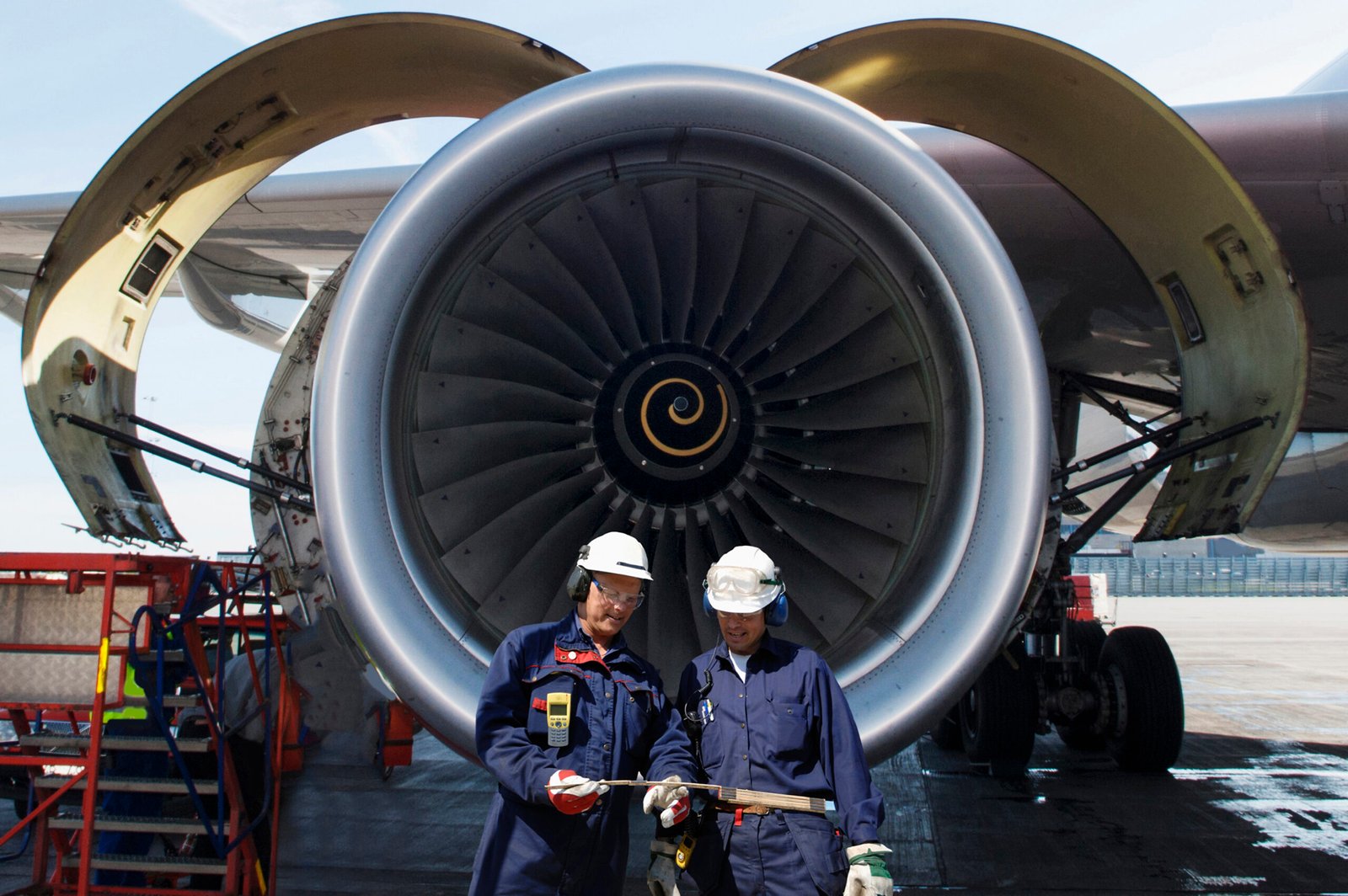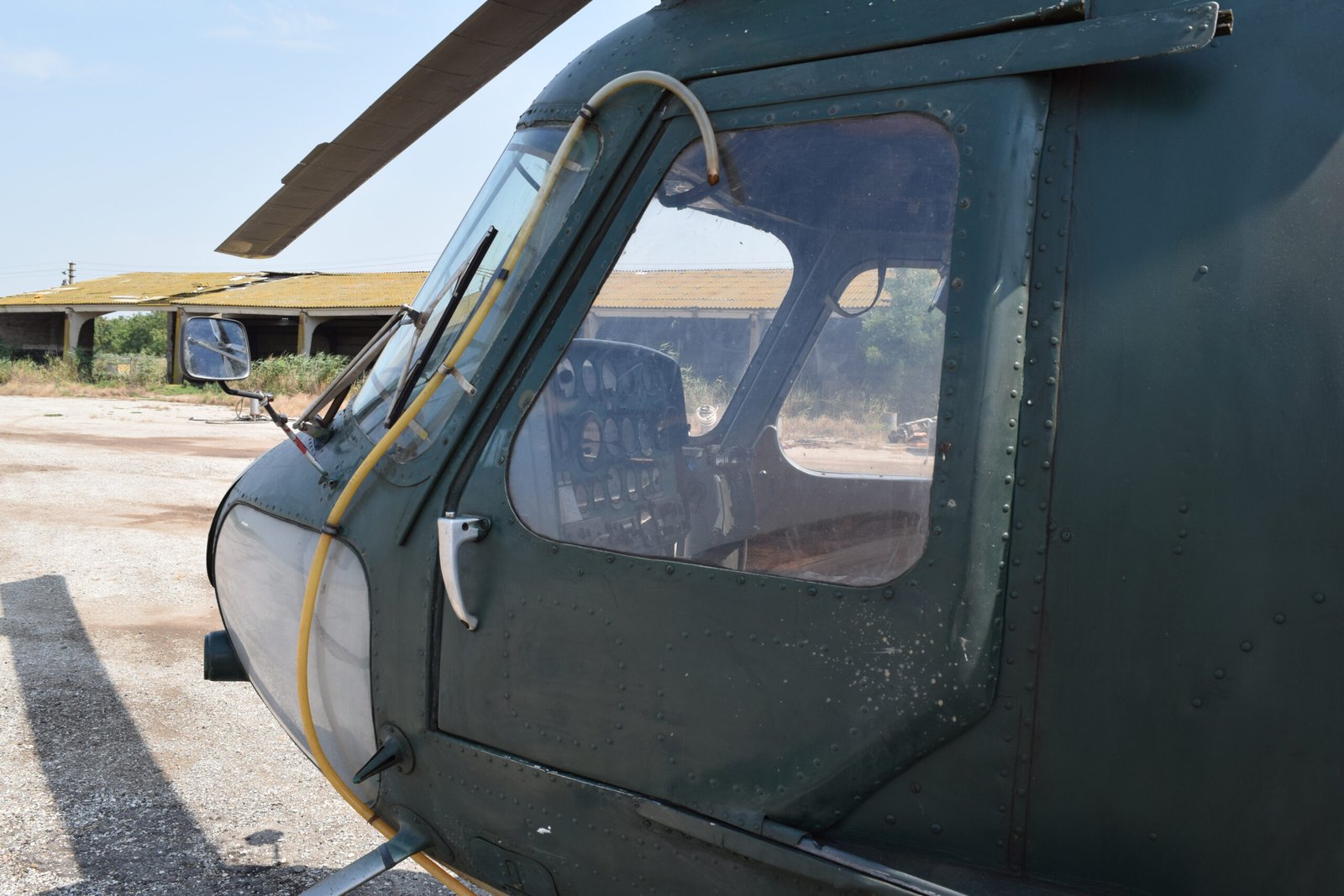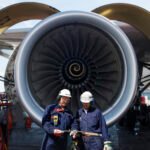Blog Today’s Trends
“Pilot Insights: Your gateway to the world of aviation, offering expert advice, training tips, and industry news for aspiring and seasoned pilots.”
The Green Skies Ahead: Sustainable Innovations in Aviation
As the aviation industry continues to evolve, sustainability has emerged as a critical focus. With increasing awareness of environmental impacts, innovative solutions are being developed to reduce carbon footprints and promote greener practices. To navigate this transformative landscape, aspiring aviators can access various educational resources tailored to their interests and career goals.
*Aviation Schools by Types of Courses**
The journey into aviation begins with education, and there is an abundance of options available for those eager to take flight. Aviation schools offer diverse programs catering to different aspects of the field:

1. **Pilot Training Programs**: These courses focus on the technical skills needed to operate aircraft. From private pilot licenses (PPL) to commercial pilot licenses (CPL), students gain hands-on experience that prepares them for real-world flying.
2. **Air Traffic Control**: Specialized curricula teach students how to manage air traffic safely and efficiently. Graduates play a crucial role in maintaining orderly skies while ensuring flights operate smoothly.
3. **Aviation Management**: For those interested in the business side of flying, aviation management courses cover topics such as airport operations, airline marketing, and logistics—essentially everything needed for running successful aviation enterprises.
4. **Aircraft Maintenance Engineering**: This program equips students with the knowledge required to troubleshoot and repair aircraft systems. As sustainable technologies emerge, understanding new eco-friendly materials becomes increasingly vital.
5. **Unmanned Aerial Systems (UAS)**: With the rise of drones, many institutions now offer courses focused on UAV technology, regulations, and applications—a rapidly growing sector within aviation.
Exploring these varied pathways provides prospective aviators with rich opportunities aligned with their passions while contributing positively to industry sustainability.
*Lists of Aviation Blogs, Websites, Social Media Sites**
Staying informed about the latest advancements in sustainable aviation practices is essential for both professionals and enthusiasts alike. Here’s a compilation of valuable online resources:
**Aviation Week Network**: A leading source for news covering all aspects of aerospace innovation.
**FlightGlobal**: An extensive database offering insights into airlines’ efforts toward sustainability.
**The Air Current**: Focuses on news analysis related specifically to market shifts in airlines aiming for greener operations.
**Simple Flying Blog & Site**: Offers updates on current events along with expert opinions on how airlines can innovate sustainably.
**Reddit’s r/flying Community**: A vibrant forum where pilots share experiences and discuss eco-friendly practices in aviation.
Additionally, popular social media platforms like Twitter (#AvGeek) or Instagram provide a visual feast featuring stunning aircraft photos alongside discussions about sustainability trends within the community.
*FAA Flight Schools/Airplane Schools/Simulators**
For those ready to take action towards becoming licensed pilots or specialists in other areas of aviation, FAA-approved flight schools remain indispensable resources. These institutions uphold rigorous training standards that ensure safety while equipping students with crucial skills.

Many FAA flight schools offer advanced simulators that mimic real-life flying scenarios—perfecting techniques without leaving the ground! Simulators not only minimize fuel consumption but also allow trainees from diverse backgrounds unlimited opportunities for practice without environmental impact concerns.
In conclusion, as we gaze upon the horizon marked by promising green skies ahead, it’s clear that sustainable innovations are reshaping our beloved industry. By diving into educational avenues and utilizing available resources—be it blogs or reputable flight schools—we can actively participate in creating a more environmentally responsible future for aviation! So buckle up; it’s going to be an exciting ride!
Flying Into the Future: The Latest Innovations in Aviation Technology
The aviation industry stands on the brink of a technological revolution, blending tradition with cutting-edge innovations. From training pilots with advanced simulators to the rise of drones and online learning platforms, the future is taking flight in ways we could hardly imagine just a decade ago. Let’s delve into some of the latest advancements transforming how we approach aviation.

*Aviation and Technology Training: Simulators**
Gone are the days when aspiring pilots had to rely solely on real aircraft for training. Today, flight simulators have become an integral component of pilot education. These sophisticated tools replicate real-world flying conditions with stunning accuracy, allowing trainees to experience everything from routine maneuvers to emergency situations without leaving the ground.
Modern simulators incorporate virtual reality (VR) technology, making training sessions immersive and realistic. Learners can engage in simulated flights that mimic weather changes or mechanical failures, thus better preparing them for actual flight scenarios. This innovative training not only enhances safety but also optimizes costs associated with traditional flight instruction.
*Essential Aviation Blogs and Resources**
For those who want to stay informed about ongoing developments in aviation technology, numerous blogs and websites serve as valuable resources:
1. **The Points Guy** – Focuses on travel tips and airline news.
2. **Airliners.net** – A community-driven site showcasing photos and discussions on aviation topics.
3. **Aviation Week** – Offers insights into aerospace trends, technology advancements, and industry analysis.
4. **FlightGlobal** – Provides updates on airlines, aircraft manufacturers, and regulatory changes.
5. **Jetwhine** – A mix of opinions on aviation issues along with entertaining stories from pilots.
Social media platforms like Twitter feature hashtags such as #AvGeek or #PilotLife that connect aviation enthusiasts globally. Following accounts of airlines, flight schools, or influential aviators can keep you updated while also building your network within this exciting field.
*Online Aviation Courses: Ground Schools & Careers**
The advent of online education has made it easier than ever to pursue a career in aviation without geographical constraints. Many organizations offer comprehensive online courses that cover foundational knowledge essential for aspiring pilots or those looking to start careers in ground operations.
These courses often include Ground School programs that prepare students for FAA certification exams while providing flexible scheduling options—ideal for busy individuals juggling work and study commitments. Platforms like Coursera or Udemy host various programs ranging from introductory pilot training to specialized subjects such as air traffic control or aircraft maintenance.
With growing demand for qualified pilots due to global travel resuming post-pandemic, many airlines actively recruit trained professionals through dedicated job boards like PilotJobs.com or Avjobs.com.
*The Drone Revolution**
Drones have emerged as one of the most intriguing facets of modern aviation technology. With applications ranging from aerial photography to package delivery and agricultural surveillance, these unmanned aerial vehicles (UAVs) are reshaping industries across the board.
Regulatory bodies like the Federal Aviation Administration (FAA) provide guidelines around drone usage ensuring safety while promoting innovation in this sector. Their website offers comprehensive resources about drone registration processes along with information concerning Part 107 licensing—a must-have for commercial drone operators.
In conclusion, as we fly into an exciting future where technology meets traditional practices within aviation, staying updated through reliable sources becomes vital for enthusiasts and professionals alike. Whether it’s embracing simulator training or exploring online courses tailored specifically for aviation careers—or even navigating the new world of drones—the sky truly is not the limit; it’s just the beginning!

Wings of Change: How Aviation is Adapting to Environmental Challenges
As the world grapples with climate change, the aviation industry finds itself at a pivotal crossroads. The soaring demand for air travel, combined with concerns about environmental sustainability, has pushed the sector to embrace innovation like never before. From cutting-edge technology training programs to the rise of drones and online courses, aviation is evolving rapidly in response to these challenges.
One of the most significant technological advancements in aviation training is the use of simulators. Gone are the days when aspiring pilots relied solely on traditional flight instruction. Today’s state-of-the-art simulators provide an immersive experience that closely replicates real-world flying conditions. These high-fidelity environments allow students to practice maneuvers, develop problem-solving skills, and understand complex systems without leaving the ground. Moreover, they significantly reduce fuel consumption and emissions associated with training flights, thus promoting greener practices right from the start.
For those eager to delve deeper into aviation discussions and stay updated on industry trends, a plethora of blogs and websites exist. Some noteworthy mentions include “The Points Guy,” where you can find insights into airline loyalty programs; “AirlineReporter,” which covers airline news and reviews; and “Flying Magazine,” offering expert advice on various aspects of flying. Social media has also become an invaluable resource; platforms like Twitter host vibrant conversations under hashtags such as #AvGeek or #AviationNews, making it easy for enthusiasts to connect.
In addition to blogs and social media channels, numerous online courses offer aspiring aviators critical knowledge. Ground schools have transitioned online, providing flexibility for those who may not be able to attend in-person classes. Institutions like Embry-Riddle Aeronautical University and Purdue University Global offer comprehensive curricula covering everything from basic aerodynamics to advanced navigation techniques. Online platforms such as Coursera or Udemy also feature specialized courses tailored for specific interests within aviation—ideal for anyone looking to enhance their skills while balancing other commitments.

The increasing popularity of drones marks another transformative change within the aviation landscape. As technology advances, drones are being utilized across various industries—from agriculture monitoring to disaster relief efforts—showcasing their versatility beyond traditional flight operations. The Federal Aviation Administration (FAA) has been proactive in establishing regulations that facilitate safe drone operations while promoting innovation in this burgeoning field. For prospective drone operators or enthusiasts wanting more information about regulations or certification processes, visiting FAA’s dedicated drone page provides essential resources.
Pilot jobs continue evolving alongside these changes too! The industry’s push towards sustainability has led airlines to seek candidates skilled not only in flying but also knowledgeable about eco-friendly practices. Companies are increasingly looking for pilots who understand green technologies or have experience operating electric aircraft—a trend that will likely gain momentum in coming years.
To navigate this ever-evolving landscape effectively, staying informed through reliable sources remains crucial. The FAA’s official website serves as a treasure trove of information regarding licensing requirements, regulations updates, and safety guidelines—ensuring aviators remain compliant while pursuing their passion.
In conclusion, aviation stands at a remarkable juncture where tradition meets innovation driven by environmental necessity. With enhanced training methods using simulators, accessible online education platforms, exciting opportunities with drones—and a commitment toward sustainable practices—the future looks bright for those ready to embrace these wings of change!
The History of Aviation: Milestones That Changed the Skies
Aviation is a tale spun from dreams, engineering marvels, and relentless human curiosity. From the first attempts at flight to the modern-day technological advancements that define aviation, each milestone has significantly altered how we traverse our skies. As we delve into this captivating history, it’s essential to consider how technology and training have evolved alongside these breakthroughs.
The journey began in 1903 when the Wright brothers achieved powered flight with their iconic Flyer. This moment opened a gateway to innovation that would only accelerate over the decades. With advancements in materials and aerodynamics came more sophisticated aircraft designs, leading us to the golden age of aviation in the 1920s and 1930s. Fast forward to today, where technology reigns supreme—aircraft are now equipped with state-of-the-art avionics that enhance safety and efficiency.
Training has also transformed dramatically since those early days. Gone are the simplistic methods of yesteryear; contemporary pilot training heavily relies on simulators that replicate real-world flying conditions. These sophisticated systems allow aspiring pilots to hone their skills without leaving solid ground. Simulators provide an immersive experience, enabling trainees to navigate through various scenarios—from routine takeoffs to unforeseen emergencies—without risking lives or aircraft.

In addition to practical training tools like simulators, numerous resources exist online for avian enthusiasts and professionals alike. A myriad of blogs and websites cater specifically to aviation aficionados:
1. **Airliners.net** – A community-driven site filled with photographs and discussions about commercial aviation.
2. **FlightGlobal** – Offers industry news, insights on trends, and reports on aircraft developments.
3. **Pprune.org (Professional Pilots Rumour Network)** – An engaging forum where aviators share experiences and advice.
4. **AOPA (Aircraft Owners and Pilots Association)** – A vital resource for pilots seeking information about regulations, advocacy, and education.
Social media platforms have also become a treasure trove for those passionate about flying. Twitter accounts like @TheFlyingEngineer provide fascinating insights into technical aspects of aviation while Instagram showcases stunning aerial photography through hashtags like #aviationlovers or #pilotlife.
Furthermore, online courses are revolutionizing pilot education by making it accessible regardless of geographical constraints. Ground schools offer comprehensive programs tailored for both novice aviators eager for their Private Pilot License (PPL) as well as seasoned professionals pursuing advanced ratings or endorsements. Websites such as Sporty’s Pilot Shop deliver interactive courses covering everything from basic aerodynamics to advanced navigation techniques.
In today’s rapidly advancing world, drone technology has emerged as another transformative force in aviation history. Initially used primarily for military purposes, drones have found applications across industries—from agriculture monitoring to search-and-rescue missions—and even recreational use among hobbyists! Understanding drone operation is crucial as regulations evolve; resources like FAA.gov provide valuable guidance on certification requirements for drone pilots.
For those contemplating a career in aviation—a field brimming with opportunities—resources abound! Aspiring pilots can explore job boards like Indeed or Glassdoor specifically geared towards aviation careers while networking through platforms such as LinkedIn opens doors within this competitive industry.

The evolution of aviation continues unabated; each advancement builds upon past achievements while propelling us toward new horizons yet unexplored. From cutting-edge simulators aiding future pilots’ training processes to the ever-expanding realm of drones redefining airspace usage—the milestones that shaped our skies are just beginning! Whether you’re an aspiring aviator or merely captivated by flight itself, embracing these developments ensures you remain grounded in this thrilling journey through time aloft.
Unlocking the Skies: The Impact of Drones on Modern Aviation
In recent years, the aviation sector has undergone a seismic shift, largely driven by advancements in technology. Among these innovations, drones have emerged as game-changers, revolutionizing not only how we think about flying but also how we train future pilots and aviation professionals. This post delves into various facets of modern aviation, highlighting the influence of drones and cutting-edge training methodologies.
Let’s begin with the pivotal role that technology plays in pilot training. Traditional flight schools have embraced simulators to enhance learning experiences. These sophisticated devices replicate real-world flying conditions, allowing aspiring pilots to practice maneuvers without leaving the ground. Simulators enable students to confront challenging scenarios—like inclement weather or equipment failures—in a safe environment, which is integral for building confidence and skill.

For those eager to explore more about aviation or enhance their knowledge, numerous blogs and websites serve as treasure troves of information. Here’s a shortlist of some must-follow resources:
1. **AirlineReporter.com** – Offers insights into airline news and travel tips.
2. **FlyingMag.com** – A comprehensive source for general aviation enthusiasts.
3. **AvWeb.com** – Provides continuous updates on industry trends.
4. **ThePilotReport.com** – Features pilot stories and aircraft reviews.
5. **FliteTest.com** – Focuses on the fun side of flying with DIY drone projects.
Social media platforms are also rich with content for aviation aficionados. Twitter accounts like @AviationWeek provide breaking news while Instagram accounts such as @PilotLife showcase stunning aerial photography paired with personal narratives from pilots around the globe.
For those who prefer structured learning environments, online aviation courses and ground schools are increasingly popular options. Websites like Udemy and Coursera offer specialized courses ranging from basic aerodynamics to advanced navigation techniques—all from the comfort of home! Ground schools prepare students for FAA tests, covering essential topics such as flight regulations and meteorology.
As drones gain traction in both commercial and recreational realms, they are opening up new career pathways within aviation. Industries ranging from agriculture to real estate now employ drone technology for aerial surveys and inspections, creating a demand for certified drone operators. The FAA has established guidelines that govern drone usage in airspace management; thus understanding these regulations is crucial for anyone looking to enter this field.
If you’re interested in pursuing a career as a pilot or drone operator, it’s wise to stay informed about job opportunities available through platforms like Indeed or LinkedIn where many airlines post openings regularly.
For regulatory insights, visit [FAA.gov](https://www.faa.gov), which provides extensive resources related to licensing requirements for pilots as well as guidance on operating drones safely within U.S airspace.
Embracing innovation is key in today’s fast-paced world of aviation where both manned aircraft and unmanned aerial vehicles (UAVs) coexist harmoniously. Drones not only facilitate new operational efficiencies but also inspire creativity across sectors—pushing boundaries previously thought impossible.
To conclude, unlocking the skies involves leveraging technological advances while fostering an engaged community through education—be it via traditional flight training supplemented by simulators or expanding knowledge through diverse online resources. As we continue navigating this transformative era in aviation history, one thing remains clear: embracing change will propel us all higher than ever before!




